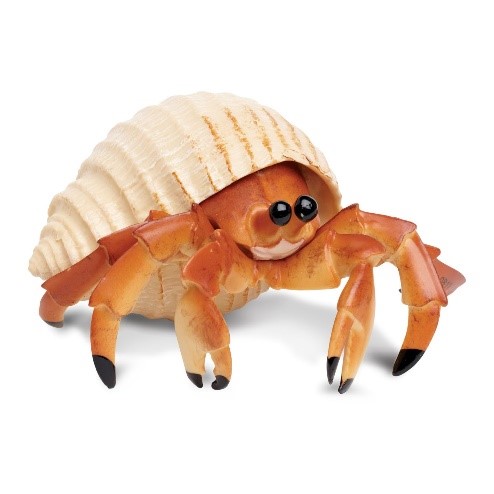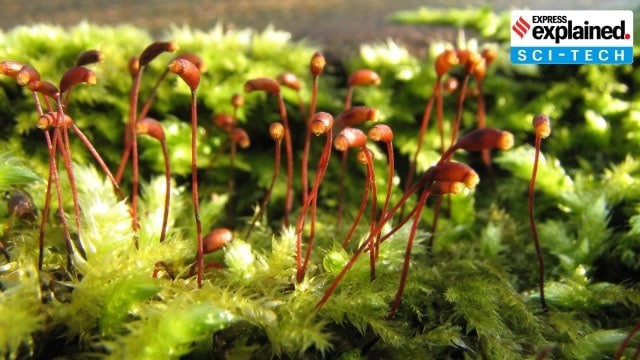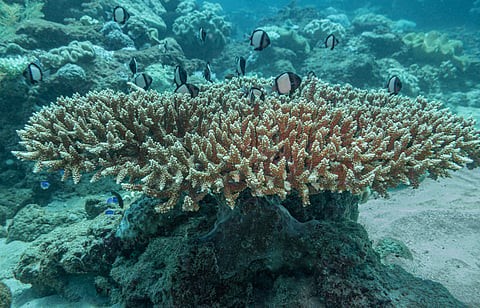Description

Disclaimer: Copyright infringement not intended.
Context
- Hermit crabs all over the world, which scavenge shells as armor for their bodies, are turning increasingly to plastic waste instead.
Hermit Crab
Taxonomy and Classification:
- Scientific Name: Varied, as there are multiple species belonging to different genera.
- Order: Decapoda (within the infraorder Anomura)
Physical Characteristics:
- Body Structure: Typically have a soft, asymmetrical abdomen, protected by a salvaged empty seashell.
- Appendages: Ten limbs, including claws, walking legs, and specialized appendages for breathing.
Habitat and Distribution:
- Habitat: Found in marine, brackish, and terrestrial environments.
- Distribution: Global distribution, with various species inhabiting different regions.

Shell Utilization:
- Shell Dependency: Hermit crabs use empty seashells (usually snail shells) to protect their soft abdomen.
- Growth and Shell Changes: As hermit crabs grow, they need to find larger shells and undergo a process called "vacating" to switch shells.
Feeding Habits:
- Omnivores: Primarily omnivorous, consuming algae, plankton, small invertebrates, and scavenging on detritus.
- Foraging Behavior: Active foragers, utilizing their claws for grasping and manipulating food.
Reproduction:
- Eggs: Females carry clusters of eggs beneath their abdomen until they hatch.
- Larval Stage: After hatching, hermit crab larvae go through a planktonic larval stage before settling in the benthic environment.
Adaptations and Defense Mechanisms:
- Mobile Shelter: Use of seashells as portable shelters provides mobility and protection.
- Aggressive Mimicry: Some species exhibit aggressive mimicry, resembling toxic or stinging organisms for protection.
Terrestrial Hermit Crabs:
- Land Adaptation: Some hermit crab species have adapted to terrestrial life, found in coastal areas and tropical regions.
- Water Dependency: Despite being terrestrial, they remain dependent on water for survival.
Conservation Status:
- Varied Status: Conservation status varies among species, with some facing threats from habitat loss and pollution.
- Importance in Ecosystem: Play crucial roles in ecosystem dynamics, contributing to nutrient cycling.
Pet Trade and Conservation Challenges:
- Pet Trade: Hermit crabs are often traded as pets, leading to collection pressures on wild populations.
- Conservation Challenges: Sustainability concerns arise due to overharvesting and habitat destruction for the pet trade.
|
PRACTICE QUESTION
Q. Consider the following statements regarding hermit crabs:
1.Hermit crabs use empty seashells to protect their hard exoskeleton.
2.The larval stage of hermit crabs is spent in the benthic environment.
3.Some hermit crab species have adapted to solely terrestrial life.
Which of the statements above is/are correct?
A) Only 1
B) 2 and 3
C) Only 3
D) 1 and 2
Answer: D) 1 and 2
Explanation: Statement 1 is correct as hermit crabs use empty seashells to protect their soft abdomen. Statement 2 is correct as the larval stage of hermit crabs is spent in the benthic environment. Statement 3 is incorrect as some hermit crab species have adapted to terrestrial life, but they remain dependent on water for survival.
|












